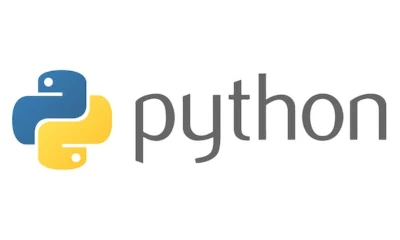データサイエンス100本ノックをPandas・Polars・SQLで解く(#31-#40)

Table of Contents
前回のノックに続いて、問31から問40までの10問をPandas/Polars/SQLでときます。
問題
問題を解き始める前に必ず1つ目のコードのセルを実行してください。実行しない場合、変数が未定義となりデータ処理の問題を解いてもエラーが出てきますので、忘れずに実行いただきますようお願いいたします。
問31
P-031: レシート明細データ(df_receipt)に対し、店舗コード(store_cd)ごとに売上金額(amount)の標準偏差を計算し、降順で5件表示せよ。
# Pandas
tmp = df_receipt[["store_cd", "amount"]].groupby("store_cd").std(ddof=0).reset_index()
tmp.sort_values("amount", ascending=False).head()# Polars
df_receipt.group_by("store_cd").agg(
pl.col("amount").std(ddof=0)
).sort("amount", descending=True).head(5)%%sql
SELECT
store_cd,
STDDEV(amount)
FROM
receipt
GROUP BY
store_cd
ORDER BY
stddev DESC
LIMIT
5問32
P-032: レシート明細データ(df_receipt)の売上金額(amount)について、25%刻みでパーセンタイル値を求めよ。
# Pandas
df_receipt.amount.quantile(q=np.arange(1, 5) / 4)# Polars
df_receipt.select(
pl.col("amount").quantile(q, interpolation="linear").alias(f"amount_quantile_{int(q * 100)}")
for q in np.arange(1, 5) / 4
)%%sql
SELECT
PERCENTILE_CONT(0.25) WITHIN GROUP (ORDER BY amount) AS percentile_25,
PERCENTILE_CONT(0.50) WITHIN GROUP (ORDER BY amount) AS percentile_50,
PERCENTILE_CONT(0.75) WITHIN GROUP (ORDER BY amount) AS percentile_75,
PERCENTILE_CONT(1.00) WITHIN GROUP (ORDER BY amount) AS percentile_100
FROM
receipt
;問33
P-033: レシート明細データ(df_receipt)に対し、店舗コード(store_cd)ごとに売上金額(amount)の平均を計算し、330以上のものを抽出せよ。
# Pandas
avg_df = df_receipt.groupby("store_cd").amount.mean().reset_index()
avg_df.query("amount >= 330")df_receipt[["store_cd", "amount", "quantity"]].groupby("store_cd").sum()# Polars
avg_df = df_receipt.group_by("store_cd").agg(pl.mean("amount").alias("amount"))
avg_df.filter(pl.col("amount") >= 330)%%sql
SELECT
store_cd,
AVG(amount)
FROM
receipt
GROUP BY
store_cd
HAVING
AVG(amount) >= 330問34
P-034: レシート明細データ(df_receipt)に対し、顧客ID(customer_id)ごとに売上金額(amount)を合計して全顧客の平均を求めよ。ただし、顧客IDが”Z”から始まるものは非会員を表すため、除外して計算すること。
# Pandas
member_df = df_receipt[~df_receipt["customer_id"].str.startswith("Z")]
member_df.groupby("customer_id").amount.sum().mean()# Polars
df_receipt.filter(~pl.col("customer_id").str.starts_with("Z")) \
.group_by("customer_id").agg(pl.sum("amount")) \
.select(pl.col("amount").mean())%%sql
WITH customer_revenue_totals AS (
SELECT
customer_id,
SUM(amount) as revenue
FROM
receipt
WHERE
customer_id NOT LIKE 'Z%'
GROUP BY
customer_id
)
SELECT AVG(revenue) FROM customer_revenue_totals問35
P-035: レシート明細データ(df_receipt)に対し、顧客ID(customer_id)ごとに売上金額(amount)を合計して全顧客の平均を求め、平均以上に買い物をしている顧客を抽出し、10件表示せよ。ただし、顧客IDが”Z”から始まるものは非会員を表すため、除外して計算すること。
# Pandas
df_amount_sum = df_receipt[~df_receipt['customer_id'].str.startswith("Z")].\
groupby('customer_id').amount.sum()
amount_mean = df_amount_sum.mean()
df_amount_sum = df_amount_sum.reset_index()
df_amount_sum[df_amount_sum['amount'] >= amount_mean].head(10)# Polars
df_amount_sum = (
df_receipt.filter(~pl.col("customer_id").str.starts_with("Z"))
.group_by("customer_id")
.agg(pl.sum("amount").alias("amount"))
)
amount_mean = df_amount_sum.select(pl.col("amount").mean()).item()
df_amount_sum.filter(pl.col("amount") >= amount_mean).head(10)%%sql
WITH customer_amount_sum AS (
SELECT
customer_id,
SUM(amount) AS amount
FROM
receipt
WHERE
customer_id NOT LIKE 'Z%'
GROUP BY
customer_id
)
SELECT
*
FROM
customer_amount_sum
WHERE
amount >= (SELECT AVG(amount) FROM customer_amount_sum)
LIMIT
10;問36
P-036: レシート明細データ(df_receipt)と店舗データ(df_store)を内部結合し、レシート明細データの全項目と店舗データの店舗名(store_name)を10件表示せよ。
# Pandas
pd.merge(df_receipt, df_store[["store_cd", "store_name"]], how="inner").head(10)# Polars
df_receipt.join(df_store.select(["store_cd", "store_name"]), on="store_cd", how="inner")%%sql
SELECT
r.*,
s.store_name
FROM
receipt r INNER JOIN store s
ON r.store_cd = s.store_cd
LIMIT
10問37
P-037: 商品データ(df_product)とカテゴリデータ(df_category)を内部結合し、商品データの全項目とカテゴリデータのカテゴリ小区分名(category_small_name)を10件表示せよ。
# Pandas
pd.merge(
df_product,
df_category[['category_major_cd', 'category_medium_cd', 'category_small_cd','category_small_name']],
how="inner",
on=['category_major_cd', 'category_medium_cd', 'category_small_cd']
).head(10)# Polars
df_product.join(
df_category.select(['category_major_cd', 'category_medium_cd', 'category_small_cd','category_small_name']),
on=['category_major_cd', 'category_medium_cd', 'category_small_cd'],
how="inner"
)%%sql
SELECT
p.*,
c.category_small_name
FROM
product p INNER JOIN category c
ON p.category_major_cd = c.category_major_cd
AND p.category_medium_cd = c.category_medium_cd
AND p.category_small_cd = c.category_small_cd
LIMIT
10問38
P-038: 顧客データ(df_customer)とレシート明細データ(df_receipt)から、顧客ごとの売上金額合計を求め、10件表示せよ。ただし、売上実績がない顧客については売上金額を0として表示させること。また、顧客は性別コード(gender_cd)が女性(1)であるものを対象とし、非会員(顧客IDが”Z”から始まるもの)は除外すること。
# Pandas
df_amount_sum = df_receipt.groupby("customer_id").amount.sum().reset_index()
tar_customer_df = df_customer[(df_customer["gender_cd"] == "1") & (~df_customer["customer_id"].str.startswith("Z"))]
pd.merge(tar_customer_df, df_amount_sum, how="left").fillna(0).head(10)# Polars
df_amount_sum = df_receipt.group_by("customer_id").agg(pl.sum("amount").alias("amount"))
tar_customer_df = df_customer.filter((pl.col("gender_cd") == "1") & (~pl.col("customer_id").str.starts_with("Z")))
tar_customer_df.join(df_amount_sum, on="customer_id", how="left").fill_null(0).head(10)%%sql
SELECT
c.customer_id,
COALESCE(SUM(r.amount), 0)
FROM
customer c LEFT OUTER JOIN receipt r
ON r.customer_id = c.customer_id
WHERE
c.gender_cd = '1'
AND NOT c.customer_id LIKE 'Z%'
GROUP BY
c.customer_id
LIMIT
10問39
P-039: レシート明細データ(df_receipt)から、売上日数の多い顧客の上位20件を抽出したデータと、売上金額合計の多い顧客の上位20件を抽出したデータをそれぞれ作成し、さらにその2つを完全外部結合せよ。ただし、非会員(顧客IDが”Z”から始まるもの)は除外すること。
# Pandas
tar_cust_df = df_receipt[~df_receipt["customer_id"].str.startswith("Z")]
t20_cust_df = tar_cust_df[["customer_id", "sales_ymd"]].drop_duplicates()\
.groupby("customer_id").count().reset_index() \
.sort_values("sales_ymd", ascending=False).head(20)
t20_sales_df = tar_cust_df[["customer_id", "amount"]]\
.groupby("customer_id").sum().reset_index() \
.sort_values("amount", ascending=False).head(20)
pd.merge(t20_cust_df, t20_sales_df, how="outer")# Polars
tar_cust_df = df_receipt.filter(~pl.col("customer_id").str.starts_with("Z"))
t20_cust_df = tar_cust_df.select(["customer_id", "sales_ymd"]) \
.unique().group_by("customer_id").agg(pl.count("sales_ymd").alias("sales_ymd_count")) \
.sort("sales_ymd_count", descending=True).head(20)
t20_sales_df = tar_cust_df.select(["customer_id", "amount"]) \
.group_by("customer_id").agg(pl.sum("amount").alias("amount_sum")) \
.sort("amount_sum", descending=True).head(20)
t20_cust_df.join(t20_sales_df, on="customer_id", how="full")%%sql
WITH t20_customer as (
SELECT
customer_id,
count(DISTINCT sales_ymd) as cnt
FROM
receipt
WHERE
customer_id NOT LIKE 'Z%'
GROUP BY
customer_id
ORDER BY
cnt DESC
LIMIT
20
), t20_sales as (
SELECT
customer_id,
SUM(amount) as total_amount
FROM
receipt
WHERE
customer_id NOT LIKE 'Z%'
GROUP BY
customer_id
ORDER BY
total_amount DESC
LIMIT
20
)
SELECT
COALESCE(c.customer_id, s.customer_id) customer_id,
c.cnt,
s.total_amount
FROM
t20_customer c
FULL OUTER JOIN t20_sales s
ON
c.customer_id = s.customer_id問40
P-040: 全ての店舗と全ての商品を組み合わせたデータを作成したい。店舗データ(df_store)と商品データ(df_product)を直積し、件数を計算せよ。
# Pandas
df_store_tmp = df_store.copy()
df_product_tmp = df_product.copy()
df_store_tmp["key"] = 0
df_product_tmp["key"] = 0
len(pd.merge(df_store_tmp, df_product_tmp, how="outer", on="key"))# Polars
df_store.join(df_product, how="cross").height%%sql
SELECT
COUNT(*)
FROM
store
CROSS JOIN product問40までの所感
基本的統計量の算出をした上で、算出した値を使ってフィルターしたり、一時テーブルで集計結果を保存してさらに処理をしたりなど複雑な処理が増えてきました。それに伴いSQLは、PandasやPolarsよりも記述量が増えている傾向にあると思います。Pandasは相変わらず他のフレームワークよりは短めに処理を書き上げることができ、ここまでではパフォーマンスの問題もとくにありません。PolarsはPandasよりも長くなりがちですがメソッドチェーンや式を使ったデータ処理の書き味が一貫しており、単にデータ処理をするだけであればPolarsも魅力的な選択肢のように思えます。また、データの結合としては外部結合・内部結合・クロス結合なども出てきており、データ処理においてさまざまなデータを適切に連携させるために重要な概念となります。適切な紐付けを行いデータの欠落のさせ方や、NaNに対する値の補完などデータ分析や機械学習におけるデータの整形に関わるところなので、結合方法の違いについてもコードとセットで理解ができるとよさそうです。


